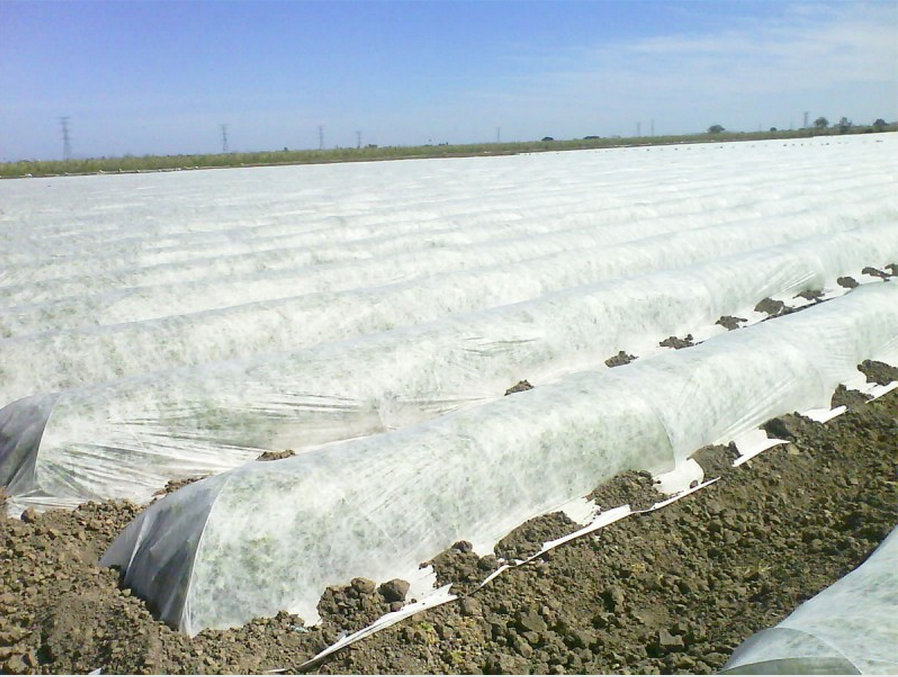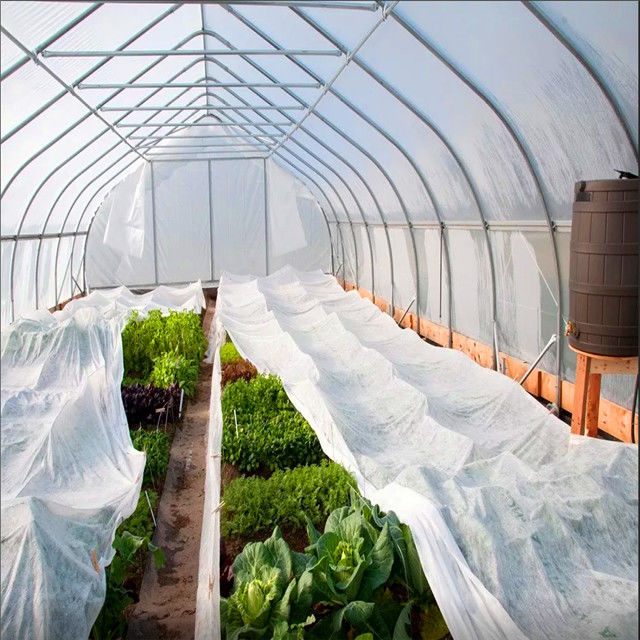
Non-Woven Industry Development. Nonwoven fabric is produced by the petrochemical industry following the creation of plastic cloth (film). It is less heavy than plastic and offers more air circulation. It is commonly employed in sanitary, medical, and filter products, as well as in engineering applications, such as disposable napkins for sanitary use, facial towels and filters. Non-woven fabric is utilized in vegetable production to protect against cold damage. Non-woven fabrics are produced differently from plastic film. However, the basic components that are used in their production are similar. This includes PE (polyvinylchloride), EVA(Ethylene Vinyl Acetate Copolymer), EVA/polyethylene, and PVA/polyvinylether. The classic film made of plastic is created by melting the plastic and then inflating it. The film is continuous. It is able to stretch for a long time. The film is smooth and has no pores. It is a completely inert film which blocks the flow and exchange of molecules within the film. Artificial chemical fibers from the above-mentioned sources became the most popular choice for the textile industry following the rise of the textile manufacturing industry. However these fibers are still formed into cloth through traditional weft and warp weaving. Non-woven materials are created by interconnecting fibers within the same plane, at various angles across all directions. It's not possible to make use of traditional warp and weave methods. It is more durable than traditional woven fabric and can be made from raw materials in one day. It's cheaper than traditional weaving, which involves drawing fibers into yarn and weaving. Recent years have seen an array of non-woven fabric being utilized in the fashion industry. Due to the advances in the field of materials science, as well as the advancement of and implementation of production technology nonwoven fabrics have become more diverse and are used more widely. Every day , we are exposed to diverse products and materials. The growing use of non-woven textiles in agriculture is due to their lightness, ease of production, low cost diversification, and wide variety of uses. Look at this non woven weed fabric for recommendations.

Non-Woven Fabrics in Agriculture. Non-woven fabrics were introduced to the agriculture in Europe in the year 1978. They can be used to keep carrots warm in the beginning of harvesting, and to protect against whiteflies and tomato leaf viruses. Non-woven fabrics in the United States are used for mulching sweet peppers, cantaloupes tomatoes and root vegetables. It's used to keep heat, promote early harvesting, and to control insects. Since non-woven materials are able to raise the temperature of soil and have good water retention, they are used for surfaces like grass-proof mats. A short fiber is used to create water-absorbing blankets that are sprayed on nursery beds to allow the roots to completely absorb water. They can also be used as the base medium for turf production or as the garden grassland that helps to moisten drain, divide, and spruce up the garden. They are also a great option to plant large trees such as garden and fruit trees. Non-woven fabrics are commonly utilized in Taiwan as crop covers. They are also extensively used for environmental control in large greenhouses in order to conserve energy. Canopy curtains, double-layered covers and canopy curtains reduce the radiation and heat loss at night. High-density spun-bonded nonwoven TAVIK fabrics were utilized in the beginning to shade and protect cauliflower bulbs. They quickly adopted it by farmers due to its low thermal conductivity and shading capability. Later, it was slowly employed for heat preservation and insect-proof cultivation of leaf vegetables. It also was used as a shade and for heat preservation and cultivation for fruit trees and pineapples. Due to Taiwan's unique climate and climate, non-woven sector growth is slow. The Taiwanese manufacturers of nonwoven fabrics are continuing to innovate nonwoven technology. The main focus of Taiwan nonwoven fabric manufacturing is water absorption air permeability and water repellency. They have stepped up their research to improve its ability to store and preserve agricultural products. It hopes it can develop additional applications. Check out this agriculture non woven fabric for more information.
